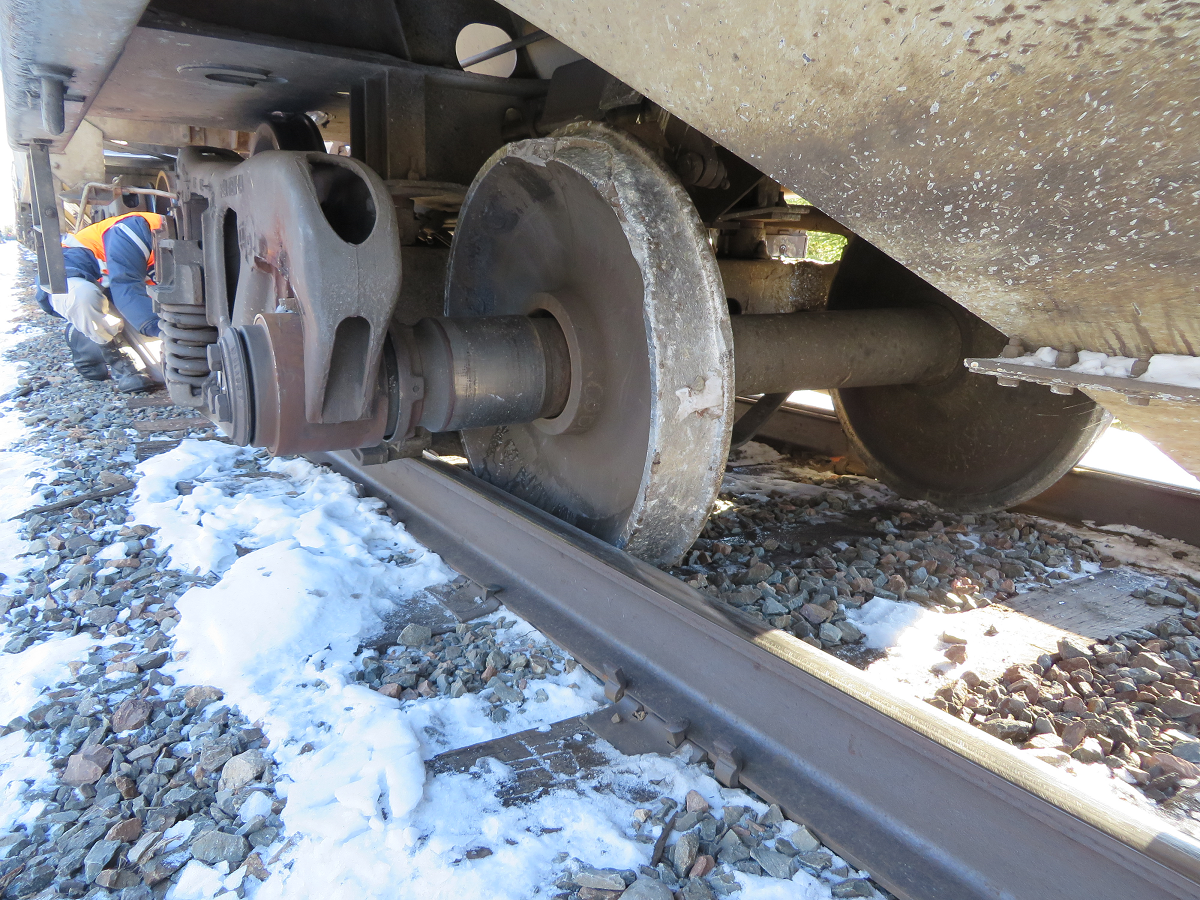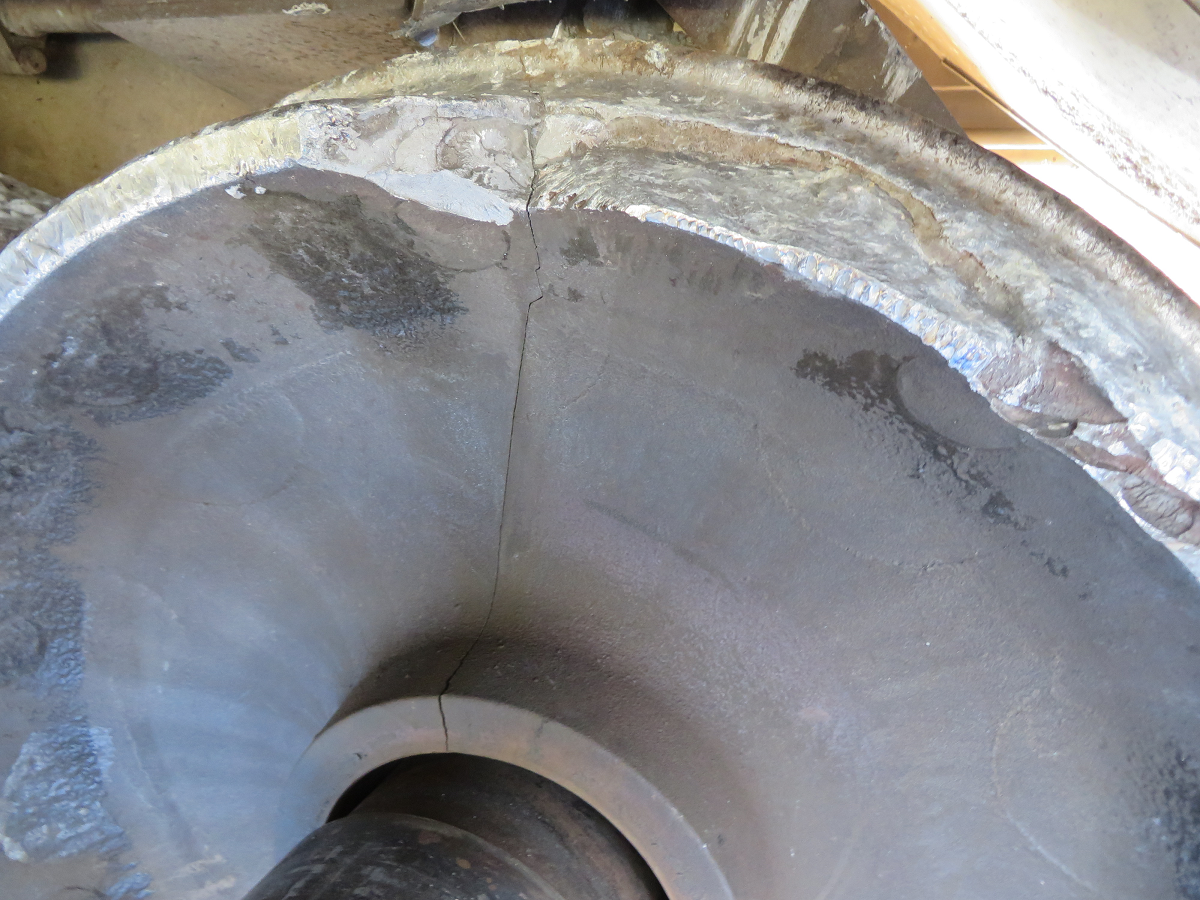CN 308 had three locomotives on the head end, one DPU engine near the rear (CN 2684), and 122 cars. 19 cars and the remote locomotive derailed. Two of the LPG (liquefied petroleum gas) cars burned, and officials conducted a controlled burn to put the fire out.
Preliminary reports indicate that a car near the head end (13th car?) had a broken wheel. The initial Transportation Safety Board (TSB) findings indicate that the broken wheel tore up the track and rails for 10 miles before the derailment, and they found 17 broken rails and 50 impact locations on the rails.
About 150 people in the area were evacuated as a precaution. They are now permitted back in their homes but have been instructed not to drink local water, as it may have become contaminated.
Here's a TSB photo of the offending car. Notice how both wheels are sitting on the ground between the rails.
There's a closeup of the wheel showing a big crack in it. I wonder if they will be able to determine if the crack was there prior to the derailment, or whether it was caused by banging on ties and crossings and so forth for 10 miles.
All of CN's regular trains detoured through northern New Brunswick: CN 120, 121, 305 and 308. CN 120 was the last detouring train on Saturday morning. Here are a few of the detouring trains:
- CN 120: CN 5611, CN 2438, and CN 2646
- CN 121: CN 2652, CN 5693, and CN 8900
The challenge with detouring on the north line is that there are few places to meet, given the short and infrequent sidings. CN 120 and 121 met in Campbellton and there was another meet at Irvco near Belledune.
Photos courtesy of the TSB's excellent Flickr page. Thanks to all of the railfans (Wendell, Nicolas, Michel and more) for their sightings.
UPDATE: The cleanup is nearly complete as of January 22.
UPDATE: The wreck site is now open to the public, as of February 10.


No comments:
Post a Comment